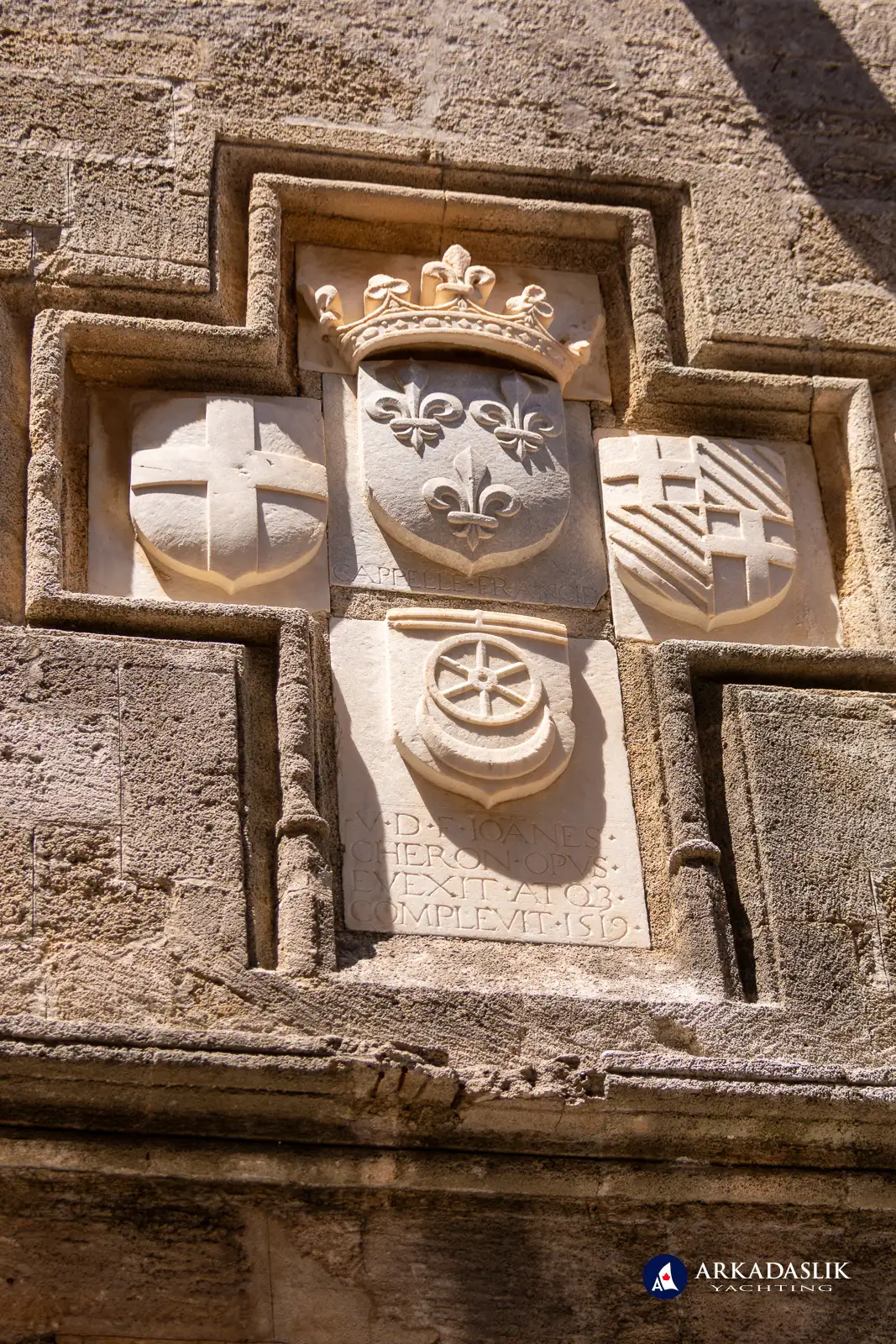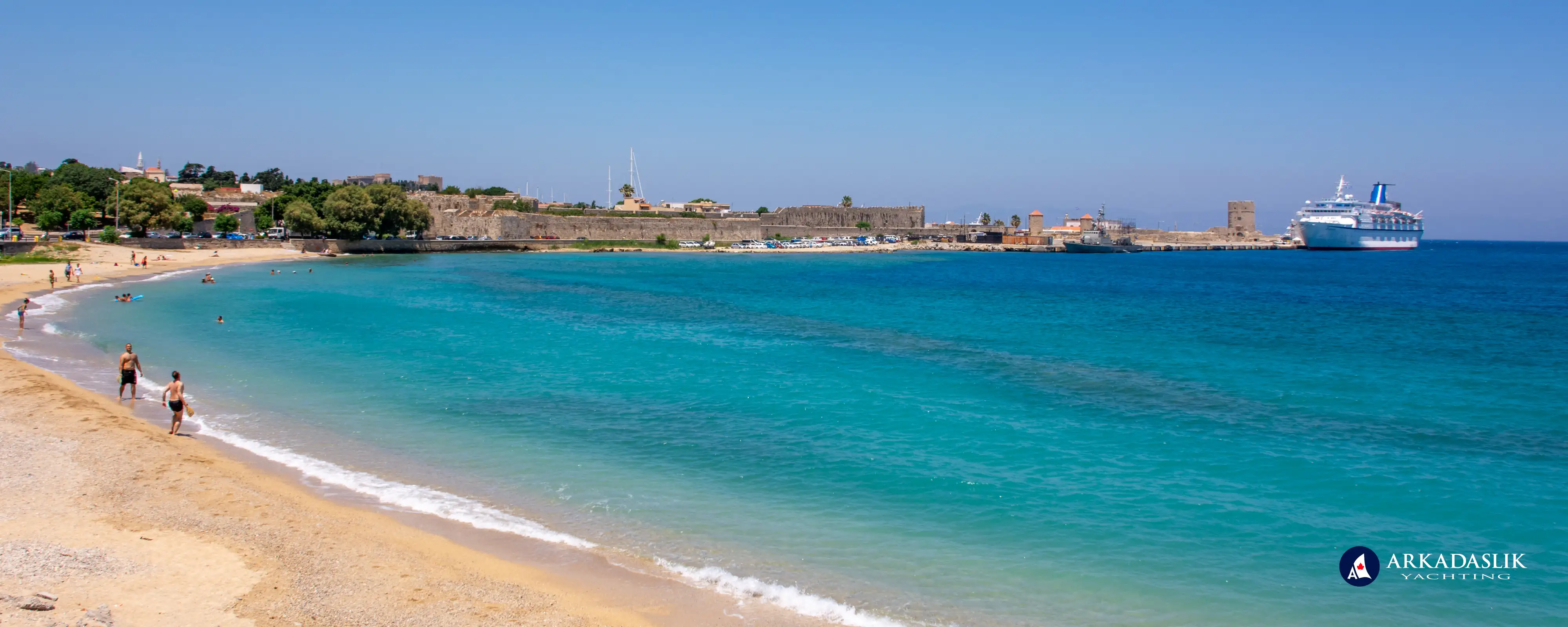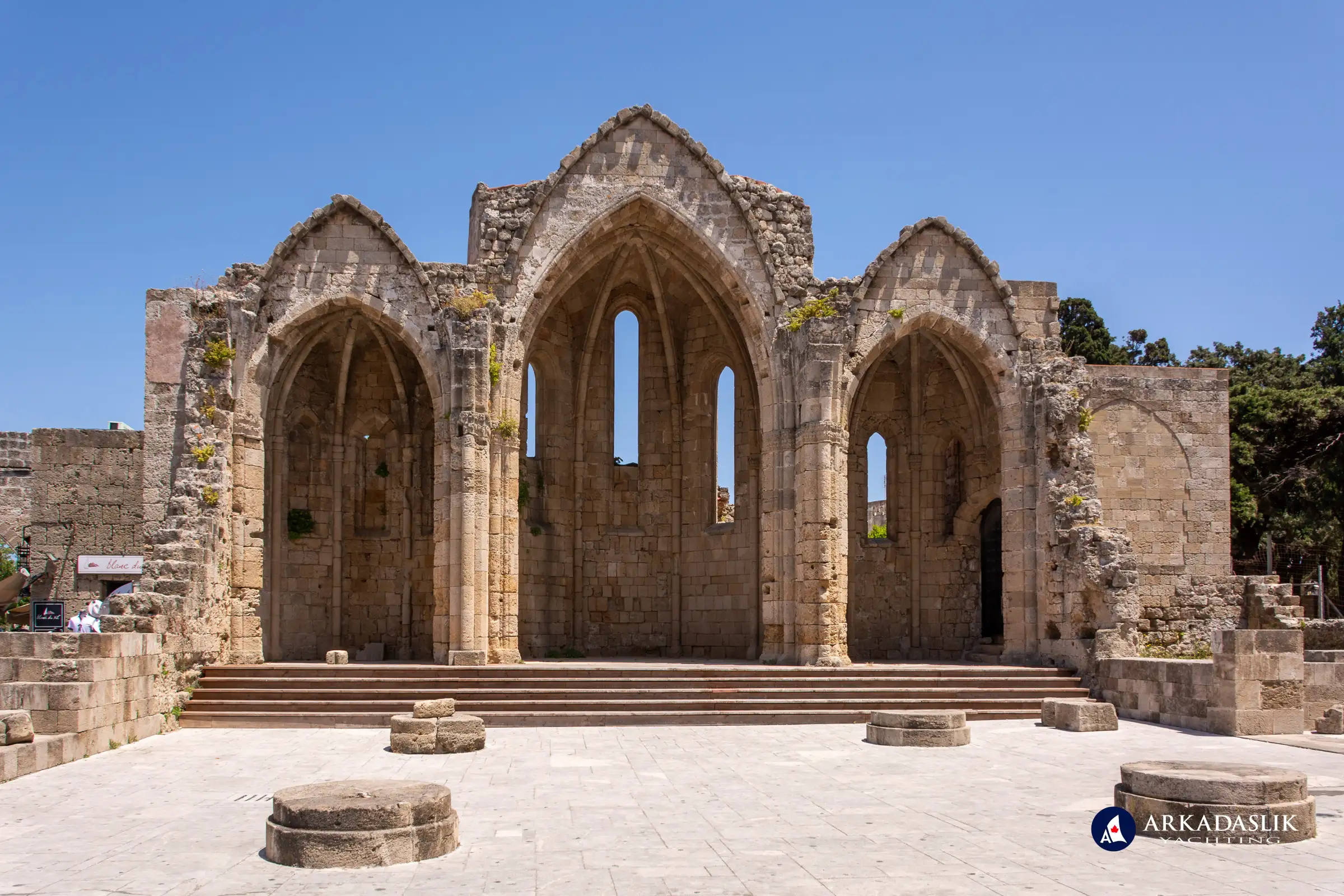Welcome to Rhodes: The Island of Knights and Legends
Everyone's favorite medieval walled city, Rhodes, is a destination where history and modernity collide. The city consists of two distinct sections: the Old Town, a UNESCO World Heritage Site, and the bustling New Town that surrounds it.
During our gulet cruises, we typically spend a day or two in the harbor, giving our guests the freedom to explore this enchanting destination at their leisure.
Old Rhodes Town: A Living Museum
Situated on the northeastern tip of the island, Rhodes Old Town is one of the best-preserved medieval cities in Europe. Surrounded by formidable stone walls, its fortress-like buildings, cobblestone alleys, and atmospheric squares invite you to step back in time.
Key landmarks include:
- The Palace of the Grand Master – now a museum, the palace was originally built as a Byzantine fortress (late 7th century AD) and later converted into a residence and administrative offices for the Grand Master of the Knights of the Order of St. John (early 14th century AD)
- The Street of Knights – the wide cobblestoned street was originally lined with inns to house soldiers in the Order of the Knights, and is now home to many countries' consulate offices.
- The Mosque of Süleyman the Magnificent – this striking pink and white mosque is located at the top of the hill on shop-lined Sokratous Street
- The Museum Square which includes:
- Hospital of the Knights – now an archaeological museum
- The Catholic Church of Our Lady of the Castle was built as an orthodox cathedral in Byzantine times – now the Byzantine Museum
- Mandráki Harbour – nowadays, two bronze deer statues oversee the entrance to the harbour, but the harbour mouth was originally protected by the Colossus of Rhodes (304-226 BC), one of the Seven Wonders of the Ancient World.
- Rodíni Park where prominent Greeks and Romans, including Julius Caesar, Cato the Younger, Cicero, Pompey, Brutus, Cassius and Marc Anthony, studied at the famous School of Rhetoric.
Spend your day exploring artisan boutiques, savoring local delicacies, and wandering through the maze of history.
Rhodes Through the Ages
Antiquity: A Center of Civilization
Inhabited since 4000 BC, Rhodes became a major maritime and cultural hub in antiquity. The ancient city was meticulously planned by Hippodamus of Miletus, boasting sophisticated infrastructure that included water and sewage systems.
The city’s reputation for excellence in philosophy, science, and the arts made it a magnet for scholars and traders alike.
Knights’ Period: The Age of Fortifications
From 1308 to 1522 AD, the Knights Hospitallers established Rhodes as their base. The city thrived under their rule, with grand fortifications, palaces, and churches built to withstand invasions.
Even today, their legacy defines much of Rhodes Old Town’s iconic medieval aesthetic.
Ottoman and Italian Influence
The Ottoman Turks brought mosques, baths, and cultural diversity to Rhodes, while the Italians restored many medieval structures in the 20th century. Their renovations revived the Knights' architectural legacy, shaping the Old Town we admire today.
Landmarks You Can't Miss
Rhodes is rich in historical and cultural treasures. Highlights outside of the city walls include:
- Gate of Freedom: The main entrance to the walled city.
- Acropolis of Rhodes: A stunning hilltop site with ancient temples and a Hellenistic stadium.
- Mandráki Harbour: Once home to the Colossus of Rhodes, this picturesque harbor is now adorned with deer statues and windmills.
- Rodíni Park: A serene escape where historical figures like Julius Caesar studied rhetoric.
Every corner of Rhodes tells a story, making it a paradise for history buffs and curious travelers alike.
Rhodes Old Town – A Visual Journey Through History
Explore the beauty of Rhodes Old Town through our curated photo gallery. From the iconic Street of the Knights to the vibrant Mandráki Harbour, immerse yourself in the sights that make this medieval city unforgettable.
Click on any image to expand.











![Votsaloto mosaics [made with small white and dark blue pebbles] used to decorate a fountain and walkway with a nautical theme](../img/gallery/120920-1547-thumb.webp)



























![Close up of stone spheres [presumably used in catapults] stacked in the courtyard of the New Hospital](../img/gallery/180912-2527-thumb.webp)

















































![Votsaloto mosaics [made with small white and dark blue pebbles] used to decorate a fountain and walkway with a nautical theme](../img/gallery/120920-1547.webp)



























![Close up of stone spheres [presumably used in catapults] stacked in the courtyard of the New Hospital](../img/gallery/180912-2527.webp)




































